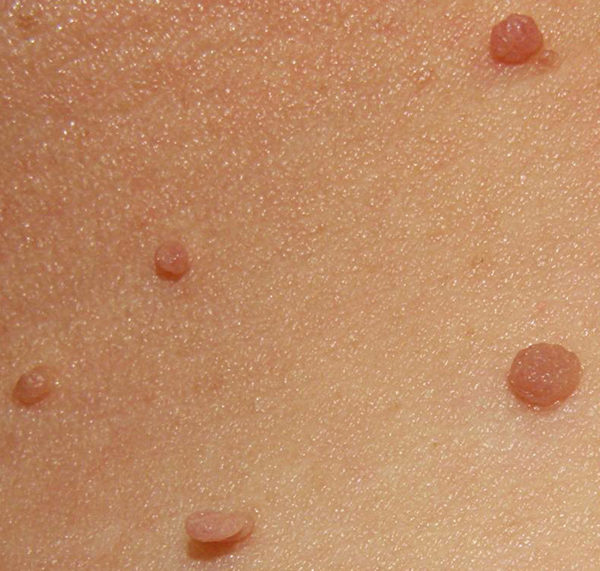A skin tag, also known as an acrochordon, is a piece of flesh that stands or hangs on its own from the skin. Typically soft to the touch, skin tags are found in all areas of the human body. These growths usually occur in two forms: stalk-like (pedunculated) and flatly attached (sessile). Skin tags may be the same color as the surrounding skin or darker than the connected flesh. Technically, skin tags are tumors but are benign, harmless, and painless. However, it is not uncommon to have the growths removed for comfort or cosmetic reasons.
There isn’t an established scientific conclusion on what causes skin tags. However, medical professionals do agree on certain factors that may indicate a person’s susceptibility to developing these type of growths.
Genetics: Some people may inherit the tendency to develop skin tags. If families members tend to have these type of skin growths, it is not uncommon for another close relative to develop skin tags, as well. Gender does not indicate whether or not an individual will have skin tags. It affects men and women equally.
Age: Skin tags are seen more prominently in middle-aged people, particularly those over 60 years of age. However, skin tags may be found on people of all ages.
Weight: People that are considered obese may have a higher propensity for developing skin tags.
Hormones: While the condition is “gender blind”, it is not uncommon for pregnant women to develop skin tags. The influx of hormones that happens during pregnancy could encourage its occurrence. People with insulin-related conditions, such as diabetes and hyperinsulinemia, may also be prone to skin tags.
Heart Conditions: High blood pressure, hypertension, or high cholesterol levels (a precursor to both conditions).
Skin Conditions: Excess collagen production and human papillomavirus (HPV)
Removal and Remedies
The main methods for skin tag removal include cutting, freezing, burning, ligation, and over-the-counter (OTC) skin treatments.
Cutting: Also known as excision, involves surgically removing skin tags with blades.
Freezing: Also known as cryotherapy, involves applying extremely cold temperature to the growth. Liquid nitrogen is often used as a freezing agent. Upon thawing from the freeze, the treated skin falls off.
Burning: Also known as cauterization, involves using direct, targeted heat to remove the growth.
Ligation: This technique restricts blood flow to the growth, allowing the excess tissue to die and fall off the skin.
OTC Skin Treatments: OTC products for removing problem skin is widely available. These treatments do not need medical intervention or a prescription. Certain products, such as SkinPro Extreme Skin Tag Remover & Mole Corrector, are specifically formulated to help treat skin tags. Using a high-grade salicylic acid solution, regular application over a short time span dissolves excessive skin growths like skin tags. Other creams and applications are available as well.
Prevention
The plain truth is that skin tags cannot be prevented. However, irritation of the growth can be prevented. Skin tags are common at friction points on the skin, particular areas where clothing is tight. Wearing looser garments around skin tag sites should help keep inflammation at bay. Additionally, avoiding picking the growth will lessen irritation, too.

